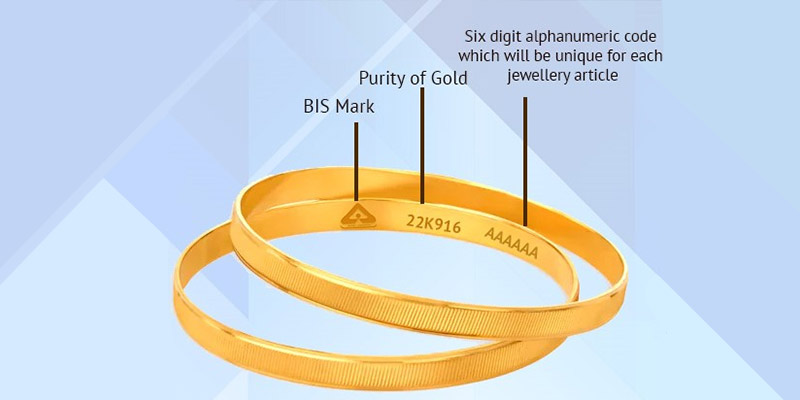- India
- May 04
Second phase of mandatory gold hallmarking from June 1
• The second phase of mandatory hallmarking of gold jewellery and artefacts will come into force from June 1 this year.
• The ministry of consumer affairs said the second phase of the mandatory hallmarking will cover additional three caratages of gold jewellery/artefacts (20, 23 and 24 carats) and 32 new districts, wherein an Assaying and Hallmarking (A&H) Centre has been set up post-implementation of the first phase.
• The Centre has notified the order in this regard.
• Gold hallmarking was voluntary in nature till June 16, 2021, when the government decided to implement mandatory gold hallmarking in a phased manner. In the first phase, 256 districts of the country were covered.
• Bureau of Indian Standards (BIS) has successfully implemented the mandatory gold hallmarking in 256 districts of the country with effect from June 23, 2021, wherein more than 3 lakh gold articles are being hallmarked with Hallmark Unique Identification (HUID) every day.
What is hallmarking?
• Hallmarking is the accurate determination and official recording of the proportionate content of precious metal in jewellery/artefacts or bullion/coins.
• Hallmarks are marks used in many countries as a guarantee of purity or fineness of precious metal articles.
• The BIS Hallmarking Scheme has been aligned with international criteria on hallmarking.
• Hallmarking of gold jewellery was started by BIS in April 2000 to provide third party assurance to consumers on the purity of gold jewellery or its fineness.
• The scheme for hallmarking of silver jewellery/artefacts was launched in October 2005.
• Under the scheme, while the jewellers are granted registration to sell hallmarked jewellery, Assaying & Hallmarking (A&H) centres are recognised to assay the purity of the jewellery submitted by the registered jeweller, along with declaration of purity and to apply hallmark on such jewellery which is found conforming to relevant Indian standard including declared fineness. The recognition of an A&H Centre is done against IS 15820:2009.
• The main objectives of the Hallmarking Scheme are to protect the public against adulteration and to obligate manufacturers to maintain legal standards of fineness.
• In India, at present two precious metals — gold and silver — have been brought under the purview of hallmarking.
• The annual consumption of gold which was estimated at 65 tonnes in 1982, has increased to over 800 tonnes presently.
• About 80 per cent is for jewellery fabrication (mainly 22 carat purity) for domestic demand, 15 per cent for investor demand and barely 5 per cent for industrial use.
Testing of unhallmarked gold jewellery
• The BIS has made a provision to allow a common consumer to get the purity of their unhallmarked gold jewellery tested at any of the BIS recognized AHCs.
• The AHC will undertake the testing of gold jewellery from common consumers on priority and provide a test report to the consumer. The test report issued to the consumer will assure the consumer about the purity of their jewellery and will also be useful if the consumer wishes to sell the jewellery lying with him.
• The charge for testing gold jewellery up to four articles is Rs 200. For five or more articles, the charges are Rs 45 per article.
• The authenticity and purity of the hallmarked gold jewellery items with HUID number, purchased by consumers, can also be verified by using ‘verify HUID’ in the BIS CARE app which can be downloaded.
Manorama Yearbook app is now available on Google Play Store and iOS App Store

